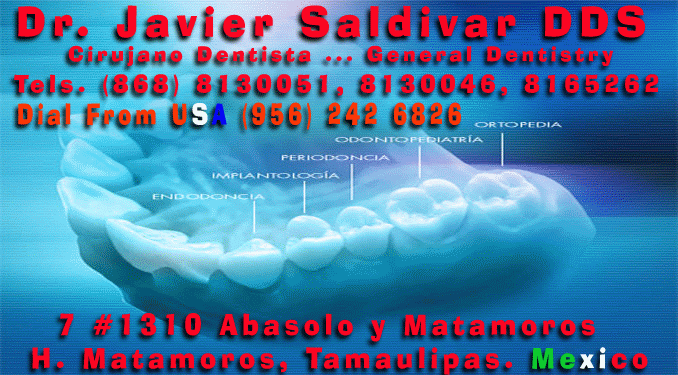



|
|
¿Que es el aire abrasivo?
El aire abrasivo es un suave spray consistente de una mezcla de aire y polvo que remueve la caries del diente SIN ANESTESIA.
¿Duele el aire abrasivo?
Nunca!... Controlando la velocidad y la intensidad del polvo y el aire, su dentista puede hacer cavidades dentales virtualmente sin dolor.
NO es necesaria una INYECCIÓN anestésica, por lo tanto no sufrirá sus efectos secundarios como lo son, labios caídos, dormidos y paralizados.
El arte y la ciencia de la micro odontología han cambiado, ofreciendo el tratamiento contra la caries; SIN AGUJAS, SIN FRESAS, SIN RUIDOS Y SIN TEMOR.
¿Que otra información hay sobre el aire abrasivo?
Al dirigir un delgado fluido de aire abrasivo en el área de la caries, nosotros removemos mínimas secciones del diente, eliminando SOLAMENTE el tejido cariado y respetando al máximo el tejido sano. Hasta ahora todos los dentistas usaban la ruidosa turbina realizando con la fresa una gran cavidad, comparándola con el haz de polvo que realizará el aire abrasivo, para remover la porción de la estructura del diente cariada. El aire abrasivo realiza solo una PEQUEÑA cavidad y es parte de la Micro-Odontología- La alta tecnología odontológica de punta.
¿Que es la Micro-Odontología?
Es la Filosofía y práctica de descubrir y realizar el tratamiento lo más temprano posible, y la de remover lo menos posible la estructura dental, de hacer lo más pequeñas posible las obturaciones y de asegurarse que estas sean estéticamente agradables y que tengan más tiempo de duración. El aire abrasivo es un elemento que remueve la caries y prepara el diente para su restauración, de una forma segura y lo mas importante SIN DOLOR ni anestesia.
¿Que debería saber sobre detección precoz y tratamiento?
Ante la menor sospecha de caries en un diente, Acuda a nuestro consultorio para ponerle una tintura detectora de caries sobre el área del diente sospechoso. Esta tintura ayuda a identificar la posición y la extensión de la caries, aún la que no es visible a simple vista, para así mantener en lo posible la estructura dental sana no afectada. Nada mas quitamos la caries respetando su diente sano.
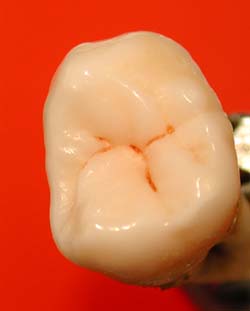
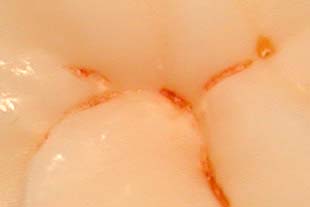
¿Si me detectan una caries dental, puede ser tratada inmediatamente?
SI. Inmediatamente y en poco tiempo. La detección precoz significa tratamiento temprano. ¡Aquí estamos hablando de caries, o sea infección del diente!.. ¿Porqué esperar que la caries se extienda y la cavidad se haga más grande? En nuestro consultorio podemos solucionar su problema de caries, en el mismo día devolviéndole a sus dientes la salud dental. SIN ANESTESIA, SIN TALADRO, SIN FRESAS, SIN ESE MOLESTO RUIDO, SIN VIBRACIONES Y EN SOLO 45 SEGUNDOS.
¿Porqué el aire abrasivo es superior a las fresas?
El equipo de aire abrasivo que se usa en lugar de las fresas es de marca Kreativ System. Su tecnología elimina olores, ruidos, fresas, vibración, pequeñas fracturas y lo mas importante SIN ANESTESIA.
¿El aire abrasivo se puede usar en todo tipo de caries?
SI. En grandes rasgos se pueden considerar tres estadios principales en la evolución de una caries. En el primero, es atacado el esmalte y luego la dentina; en el segundo se halla involucrada la pulpa y en el tercero aparecen quistes y abscesos periapicales. Es en el primero donde se usa esta técnica, ya que en el segundo se hace necesario un tratamiento de conducto, y en el tercero el diente es necesario el tratamiento de conductos y cirugía periapical.
Una vez que el aire abrasivo elimina la caries, ¿Como se rellena la cavidad?
Esta es literalmente la parte más hermosa. En nuestro consultorio rellenamos la cavidad con un material del color del diente, EXENTO de mercurio, haciéndolo mucho más fuerte, más duradero y resistente a nuevas caries. Este procedimiento también lo hacemos con tecnología de punta usando Luz de arco de plasma, en solo 3 segundos.

LÁMPARAS DE CURADO DE ARCO DE PLASMA
El mecanismo de generación de luz por medio del arco de plasma es nuevo en la comunidad dental. La fuente de luz en la unidad de arco de plasma es un bulbo de Xenón. Dos sondas crean un potencial de alto voltaje que ioniza el gas ( plasma ) y emite una chispa que emite luz (arco).
La NASA originalmente desarrolló la tecnología del arco de plasma para estudiar la re-entrada del calor de los vehículos espaciales creando un arco entre la sonda y el escudo o protector. Desde aquí la tecnología ha desarrollado equipamientos para los instrumentos médicos.
La Apollo 95E de Dental/Medical Diagnostics (Woodland Hills, CA ) es un ejemplo de luz de arco de plasma. La lámpara produce una luz blanca de alta intensidad que es filtrada permitiendo una luz azul con un rango entre 400 a 500 nm. La cantidad total de luz azul emitida es varias veces mayor que con la lámpara de curado convencionales.
Un cronómetro sobre la luz limita cada exposición a un máximo de 3 segundos en cada activación y da un período latente de 1.5 segundos en el cual la luz no puede ser activada . Este tiempo previene el excesivo calentamiento de los tejidos que puede ocurrir cuando hay sobre-exposición.
Es importante hacerle saber que este tipo de luz, NO daña ningún tipo de tejidos, como lo podría ser, sus encías, sus piezas dentales, Y lo mas importante NO causa DOLOR.
¿Queda bien?
Definitivamente SI. Se va a ver como un diente sano y reluciente.
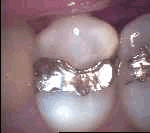
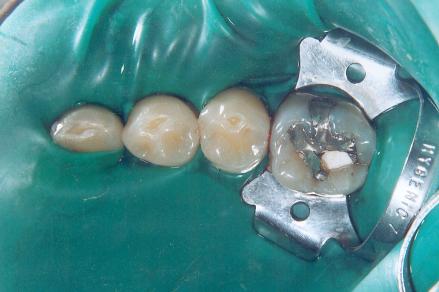
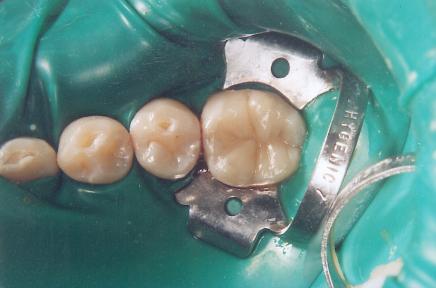
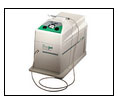
¿Pueden los niños tanto como los adultos beneficiarse con esta tecnología?
Totalmente SI. El aire abrasivo está perfectamente indicado para los niños. La mayoría de las cavidades que son detectadas precozmente, pueden se tratadas inmediatamente, SIN ANESTESIA sin fresas, sin ruido ni agujas. El diente es restaurado con materiales de aspecto natural que protegen su estructura. La mayoría de los niños no se dan cuenta de lo que el dentista está haciendo.
¿Para que otros tratamientos sirve el aire abrasivo?
Además de lo mencionado anteriormente, se usan en los siguientes procedimientos: Reparación de dientes astillados, fracturados o desgastados. Preparación de la odontología cosmética (Blanqueamientos en SOLO 20 MINUTOS) Remoción de manchas, Sellado de puntos y fisuras.
La mayoría de la gente le teme al dentista, hasta que tienen la experiencia del proceso suave y agradable del aire abrasivo y la Micro-Odontología.
Usted puede ser el afortunado en experimentar esta nueva tecnología que se basa en no producir dolor ni temor y que se dirige a la conservación, estética y cuidado de la salud bucal.

What is the Air abrasion and how does it to work? It's a new instrument that can be used as an alternative to the drill in many procedures. A microscopically fine powder is carried to the tooth by a stream of air, gently spraying away decay. In a simple sense, you cold say it works like a precise miniature sandblaster. What does it mean to you as a patient? Thanks to its precision and gentleness, the air abrasion unit allows us to treat decay at an earlier stage without as much removal of healthy tooth material, thereby helping to preserve the strength of the tooth. Teeth treated this way may be less likely to require crowns in the future. Smaller fillings are less susceptible to wear and may last longer. The air abrasion system creates a cavity surface that is so ideal for use with tooth-colored (composite) fillings, we can place those fillings faster than ever before. In some instances, using the air abrasion unit actually allows us to complete your treatment in fewer visits. Will it hurt? The aspect of the air abrasion that many patients appreciate most is its comfort. The system greatly reduces heat and vibration, two sources of discomfort traditionally associated with fillings. That's why this system is often used without anesthetics. This also enhances our ability to treat patients who are pregnant or medically compromised. With air abrasion, we can often treat children without the two things they fear most- the needle and the drill. But since for some people air abrasion may involve minor discomfort, it would be inaccurate to call it "painless".
Is it safe? Absolutely. The tiny particles we use are alpha alumina, a pure biocompatible substance long used in medicine and food. In fact, it is a prime ingredient in several popular whitening toothpastes. Only a tiny amount of this microscopically fine powder is actually used in each procedure and most of it is immediately removed by our evacuation system. Scientific tests show that patients would have to undergo about 28 typical 20-30 second air abrasion procedures in order to inhale enough alpha alumina to equal the weight of one grain of table salt. The amount inhaled in a single procedure is about 1000 times less that then limit established by the Occupational Safety and Heath Administration. What can it be used for? Besides tooth-colored fillings, the air abrasion is very useful in a number of cosmetic procedures such as veneers, inlays and onlays. It also allows us to apply protective sealants in a matter of seconds- a time frame even shorter than the attention span of most youngsters. What does it sound like? The noticeable sound most patients hear is the evacuation system that removes particles from the mouth. It sounds similar to a quiet vacuum cleaner. The air abrasion unit itself makes a blowing sound similar to an aerosol can being sprayed. Are any precautions necessary? We will ask you to wear special glasses to protect your eyes from irritation. As an added precaution, we will sometimes shield off parts of your mouth which aren't being treated. If I come to your office, will I be treated with the air abrasion unit? Not necessarily. Thought the air abrasion procedure will dramatically reduce our overall reliance on the drill, it is not appropriate for every part of every procedure. For example, we will continue to use the drill to remove silver (amalgam) fillings and do crown preparations. Please ask us about the role the air abrasion might play in your treatment.
|
|
|
|
|
|
|
MicroDentistry is the philosophy and practice of finding and treating decay as early as possible, of removing as little tooth structure as possible, of making the smallest possible restorations (fillings) and of assuring that those restorations are aesthetically pleasing and long lasting. |
||||
|
|
 |
|||
|
The smallest of
defects on your teeth can be viewed on a television screen using the
magnification obtained from an intra-oral camera. These areas often do not
show up well on X-rays and previously have been left to get larger. These
areas can now be investigated with a very fine beam of air and powder. This
painless procedure will confirm the extent of any decay, which may be
present. Air Abrasion:is the part of the procedure that removes the decay and prepares the tooth for restoration.without anaesthesia
|
||||
|
Injection Free Dentistry
: Air Abrasion
|
||||||||||||||||
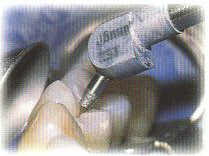 |
||||||||||||||||
|
Because
there is no drill there's often no need for anaesthetic (and no needles). Another benefit of air abrasion is that more of the tooth structure can be preserved than ever before. Thanks to the accuracy of the air stream, only the decay is removed, not the healthy part of the tooth. see our page on microdentistry. Dr.Saldivar has an air abrasion unit installed and this can provide a stress free alternative to a needle and drill for small cavities. Ask if it is suitable to treat your mouth this way. |
||||||||||||||||
|
|
||||||||||||||||

"No Shots and No Drills?" NO KIDDING! Air Abrasion is a relatively new dental procedure used in place of a traditional dental drill, to remove decay and prepare teeth for fillings. We simply use a small handheld piece of equipment to bombard the tooth area with a stream of powder. This powder hits the tooth under high pressure and blasts away any decay. Because of the tiny particles used, the technique is sometimes called 'micro-abrasion'.
Although not appropriate for procedures such as crown or bridge preparation, we can use air abrasion to repair cracks, discolorations, and prepare teeth for bonding procedures. In fact, the technique prepares the tooth surface to provide maximum adhesion for cosmetic work, and increased bonding strength in both restorative and cosmetic applications. Plus, it's great for conducting young children's dental treatments, eliminating the sometimes frightening noise, vibrations, and discomfort associated with a dental drill.
Easy on You
The air abrasion procedure is both simple and effective. First, we may ask you to wear protective glasses so that the tiny, harmless dust particles do not bother your eyes. As we begin the procedure, we gently move the hand-piece into position and blow the air stream at the tooth to be treated. This results in a small amount of harmless, gritty debris, that we will spray and vacuum out of your mouth during the abrasion; we simply rinse away any remaining particles after the procedure.
Effective on Teeth
Air abrasion's minute particles allow such amazing precision that more of the tooth structure is actually preserved than with traditional drill procedures. Furthermore, there's less risk of enamel micro-fracturing. It also entails minimal discomfort, since the equipment does not produce vibration or heat; thus the procedure rarely requires anesthetic. And finally, it's both quieter and faster than using a drill.
| Drilless Dentistry - Air Abrasion:
Advantages: Air abrasion is quiet! The only noise is a sound similar to a vacuum cleaner. It doesn't produce the vibrations or heat that a drill does. For all patients, air abrasion requires no anesthesia! Call today to see if air abrasion is right for you! 01152868 8130046 |
|
Here at Dental
Office of Dr.Saldivar, we
are committed to bringing you that special smile from cheek to cheek, in
more ways than one.
|
|
What Is Air Abrasion? |
|
| Air abrasion, also called "microabrasion" and kinetic cavity
preparation, is a method of tooth structure removal considered to be an
effective alternative to the standard dental drill.
Air abrasion technology functions much like the sandblasting technique used to clear graffiti from walls. An air abrasion handpiece blows a powerful air stream of tiny, fine aluminum oxide particles out of its tip onto tooth structure. Air abrasion uses the kinetic energy principle, in which particles bounce off the tooth and blasts the decay away. It most commonly is used to prepare various types of cavities to be restored with composites, or "white fillings." Air abrasion also can be effectively used to repair cracks and discolorations, prepare tooth surfaces for bonding procedures, and perform additional procedures. What are its advantages? How does air abrasion work? Is air abrasion suitable for everyone?
Who will provide my air abrasion treatment? |
MAKE YOUR APPOINTMENT RIGHT NOW : drjaviesaldivar@hotmail.com
Copyright © 2016 Dr.Javier Saldivar V. All Rights Reserved.
Reproduction or republication strictly
prohibited without prior written permission.